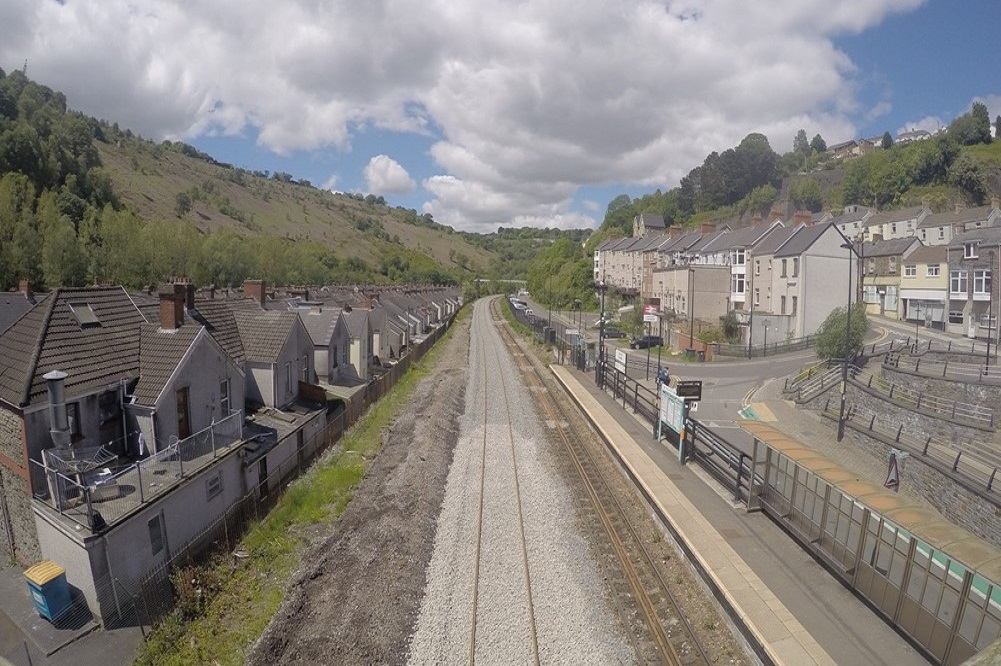Transport for Wales answer customers’ frequently asked questions

With the news that Transport for Wales has added over 60 brand new trains to its service, their head of performance has answered some of the most frequently-asked questions the company receives from customers.
More and more of Transport for Wales’ services are being operated by new trains, and this will continue to increase over the rest of this year, and Colin Lea, Transport for Wales Planning and Performance Director, was keen to share a welcome update on this and much more.
You promised new trains would be in service by now – where are they?
It is true that back when Transport for Wales took over the Wales and Borders rail service in 2018, the original plan was for a lot more of the new trains to be in service by now. The delivery of these trains to us was impacted by several factors that affected the supply chains of our manufacturers, CAF and Stadler, who are building the new trains – these factors included the Covid-19 pandemic, Brexit, and the war in Ukraine.
These factors have also impacted the infrastructure upgrades – including electrification, new track, and the construction of the new depot at Taff’s Well – which are necessary to be able to introduce our new electric trains into service.
What are the timeframes for introducing new trains on my route?
Our network is split into the Wales and Borders and the Core Valley Lines networks, with each due to have its own dedicated fleets of trains.
Over half of our planned fleet of 77 Class 197 trains for the Wales and Borders network has now entered service. We have introduced them across most of this network, starting with routes in North Wales and now stretching to West Wales, the Marches, to Maesteg and, most recently, Ebbw Vale. The next route which will see these new trains will be the Pembroke Dock Line in June.

This will leave the Cambrian services between Birmingham International and Holyhead, Pwllheli and Aberystwyth as the last to be converted to brand new Class 197s. The reason these services are the final ones to be handed over is because of the unique ETCS in-cab signalling system used on the line. This requires a dedicated fleet of ETCS Class 197s specifically for these services, which will be maintained at Machynlleth depot. These trains are currently being built and tested by CAF.
For the Core Valley Lines, we’re currently undertaking testing of our Class 756 tri-mode trains. Once the transition is complete, these will be permanently based on services to Rhymney, Coryton, Penarth, Barry Island, and Bridgend via Rhoose and Llantwit Major.
However, with work ongoing to complete electrification of the Rhymney Line, some of those services are currently being covered by Class 231 diesel trains, which are externally almost identical to the Class 756s. This has given Rhymney Line customers a much earlier benefit from new trains, which have increased capacity and improved accessibility.
While we await completion of the transformation work, we have decided to introduce Class 756s temporarily to the Treherbert, Aberdare and Merthyr Lines later this year, once testing and staff training has been completed.
This will allow us to retire more of our older trains without impacting services, and provide customers with the same benefit of new trains as seen on the Rhymney Line.
The Class 398 tram-trains, which are planned to be the permanent new trains for the Treherbert, Aberdare and Merthyr Lines, are due to enter service on those routes next year. Once enough of those tram-trains are in service, the Class 756s will move over to the Rhymney Line, and the Class 231s will move to the Ebbw Vale, Maesteg and Cheltenham Lines. The arrival of the Class 398 tram-trains will later also enable faster, more frequent services, rising to four trains per hour between Cardiff and the heads of the valleys.
There are new trains parked around the network. Why is it taking so long to introduce them to service?
Before entering service, our new trains have to undergo an extensive testing programme to ensure they are able to run reliably on the network. On the Core Valley Lines network, this is particularly complicated as we are also introducing new infrastructure such as overhead wires.
All our new fleets have already undergone basic testing, but there is much more work to be done before they can enter service. This can only take place with a small number of trains at any one time, which means that others have to be stored at different points around the network.

After testing is completed, we also have to train our drivers and conductors to operate them. Each type of train is different, so drivers and conductors have to be trained on each type of train they operate. Training a driver on a new type of train takes around five days, including eight hours of driving time with an instructor.
With hundreds of drivers and conductors throughout our network, this has meant the process of training has taken a number of years, having started in 2022 with the arrival of the first Class 197 trains, and won’t be completed until the last of the new trains are in service.
Why are you removing the new class 231 trains from the Penarth Line?
As part of the June timetable change, the structure of the Core Valley Lines timetable needed to change. In our old timetable, services to and from Penarth generally ran as part of Rhymney Line services. These gained new Class 231 trains in early 2023, replacing the older Class 769 trains.
However, as part of the timetable changes, Rhymney services will now run through to Barry Island or Bridgend via Rhoose and Llantwit Major. Class 231s will operate services to and from Barry Island. Penarth services now run through to Coryton and Caerphilly, and will temporarily be operated by older ‘Sprinter’ trains.
Once more of the transformation work on the Rhymney Line has been completed, Penarth services will be handed over to brand new Class 756 trains – we currently expect that to take place in 2025.
You’ve introduced new trains, but some services are still overcrowded. Why didn’t you order more?
While we have introduced over 60 brand new trains into our fleet, along with 7 refurbished Mark 4 intercity sets on the Marches Line and five rebuilt Class 230 trains on the Borderlands Line, but we’re not even halfway through introducing the full set of 148 new trains.
The bulk of the trains left to introduce will be on the Core Valley Lines, which will enable us to transform services between Cardiff and the valleys by providing more frequent services and significantly increasing capacity.

We also have more Class 197s to introduce to Wales and Borders services. This will enable us to increase South Wales-Manchester services to five carriages on every train in the next year, providing a major capacity increase on a route where most trains have been either two or three carriages for many years.
148 new trains represents a major investment of £800 million by Transport for Wales in transforming rail services across the whole Wales and Borders network. We have modelled projected passenger numbers and the size of the fleet is well-equipped to match this for the foreseeable future.
Our eventual fleet of 173 trains will take us to absolute capacity in terms of the number of trains we can fit on the network in its current form – the more trains we have, the more space we have to find to stable them overnight, and the more challenging it is to maintain the whole fleet in our depots.
Any further trains on top of this would not only require significant investment to pay for the trains, but would also need major investment in building new facilities to be able to manage them and track to stable them on, hiring more staff to maintain and operate them, and expanding stations to be able to safely operate longer trains.
What is happening to the old trains you’re withdrawing? Why can’t you keep them as well?
We have already withdrawn many of our “legacy” fleet – the trains we inherited when we took over the Wales and Borders rail service in 2018. This includes all the ‘Pacer’ trains and Class 175 long-distance trains. As we don’t own most of our trains, we released these trains to their owners once we no longer required them, and they have either been scrapped, gone into storage, or been preserved by rail heritage groups.
This has left the Class 150 and 153 Sprinters and Class 158 long-distance trains in our legacy fleet. We have now started the process of withdrawing the Class 150s, which will disappear from our network at a rate of about one every two months from now on.
These are 40-year-old trains that have reached the end of their working lives. While they are operationally safe to run and meet industry standards, they are getting more expensive to maintain and with new trains on the horizon, it wouldn’t be a good use of public money to take them through another expensive heavy rebuild. As a result, they are gradually being withdrawn as they hit key maintenance milestones. The last of these trains will be withdrawn once we’ve completed the introduction of new trains onto the Core Valley Lines. Most of these trains are expected to be scrapped.
We will be retaining some of the Class 153 units long-term for use on the Heart of Wales Line. Six of these carriages are being converted to carry an increased number of cycles in order to meet demand for more spaces on this beautiful rural route. These will run semi-permanently coupled with a standard carriage to provide two-carriage trains on all Heart of Wales services.
The Class 158s will continue to operate on the Birmingham-Holyhead/Pwllheli/Aberystwyth services until the introduction of Class 197s on those services, after which they will be returned to their owner.
Support our Nation today
For the price of a cup of coffee a month you can help us create an independent, not-for-profit, national news service for the people of Wales, by the people of Wales.








The new timetable is an absolute shambles and the majority of trains running from Barry are the older units used on the Cardiff Bay line. Every train I’ve needed this week has been cancelled. It’s pathetic.